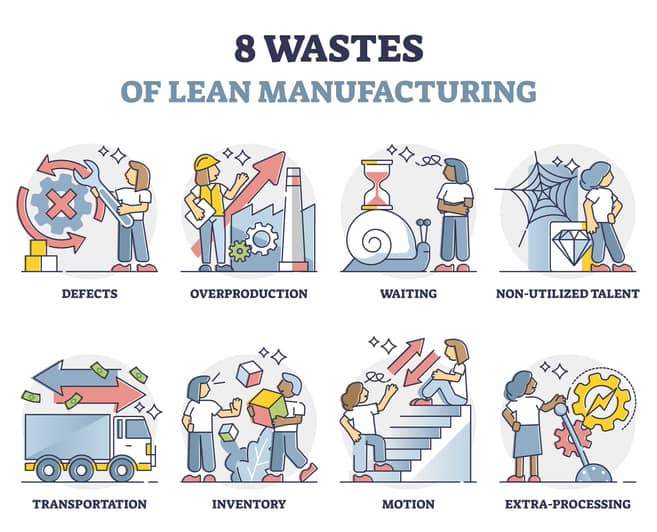Being busy can feel like you are getting things done – even if you feel overwhelmed every day. However, the “overwhelmed” part is probably where you need to focus your attention.
Busy does not equal productive. What’s more, saying or thinking “I’m so busy” might be a sign that it’s time to review how you’ve applied process improvement to your life. Or, if you haven’t done it yet, it might be time to read up on methodologies such as Lean and Six Sigma.
Why? Because being busy and overwhelmed are signs you might need more efficiency in your life.
Always Feeling Overwhelmed?
Everyone gets busy, of course. But if it’s a chronic condition, then likely there is a problem in how you approach your work day.
One of the major tenets of Lean is to eliminate wasteful actions that take time out of your day but do nothing to increase productivity.
The same can be said for your career. As reported by the BBC, always feeling overwhelmed and telling others “I’m busy” can actually “sabotage your career.” Part of the reason, according to the BBC, is that about half of all workers feel the same way. There’s not a lot sympathy from others, nor is anyone impressed by everything you are doing.
It also doesn’t work long-term to stay immersed in the details of work that doesn’t increase your production. That’s a sign of inefficiency. Over time, others will begin to see you as “inefficient and rude,” according to the BBC report.
Time For A Self-Check
Quality Digest suggests there are a handful of bad habits people can fall into. Most of it has to do with human nature. But bad habits are warning signs that you need to do a self-check on how you have implemented process improvement.
They include:
- Thinking (and maybe telling others) that all organizational challenges are with management and only they can solve them
- Doing too much “armchair criticism” of others’ work
- Wasting time in too many meetings where nothing gets done
- Not using a data-driven approach to tackle challenges from the outset
There are other ways to lose time to unproductivity. Some of the issues that can lead to being overwhelmed and wasting valuable time include:
- Saying “yes” to every work item you are handed
- Getting distracted easily by co-workers or social media
- Trying to multitask when you should be focused on the results of one project at the time
- Not setting goals that you want to achieve
- Not setting and adhering to a proper time management schedule
Those are just some common issues. But there are ways to resolve them and make yourself less busy and more productive.
Improving Efficiency
The first step is to identify areas of waste in your daily work processes. That takes an honest evaluation of yourself.
In Lean, the focus is always on cutting waste while also improving the product. In this case, the “product” is your own work productivity. The eight areas of waste are:
- Defects
- Overproduction
- Waiting
- Non-Value Added Processing
- Transportation
- Inventory
- Wasted Motion
- Unused Talent
Not every area may apply to you personally. But they are all worth investigating in the context of your own work day and the goals you want to reach with your career.
An excellent tool for evaluating a process and finding the areas of waste and opportunity is called Value Stream Mapping. A Value Stream Map examines a process – in this case, your daily workflow – and finds activities that are wasteful and unnecessary.
This Lean tool can be effective because it is fairly easy to conduct and offers powerful results. Even for how you spend your own day, you might find yourself surprised at how much time is spent on matters that add no value.
You don’t have to be overly busy to be productive. If you find yourself overwhelmed daily by the tasks you face, it might be a good time to perform a self-assessment with process improvement tools and find where you can make changes for the better.



